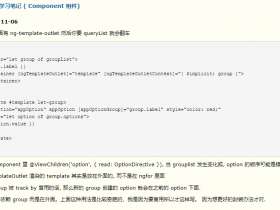- A+
关于JS继承
关于继承这个概念,是由面向对象衍生出来的。而JS身为一种基于面向对象而设计的语言,它和正统的面向对象语言又是有差别的。
面向对象语言
身为面向对象语言需要对开发者提供四种能力:
①:封装 - 把相关的信息(无论数据或方法)存储在对象中的能力;
②:聚集 - 把一个对象存储在另一个对象内的能力;
③:多态 - 编写能以多种方法运行的函数或方法的能力;
④:继承 - 有另一个或多个类得来类的属性和方法的能力;
虽然JS都具备这种能力,然而它却和正统的面向对象语言有差异,具体表现主要在第③、④点。
多态
多态主要有两种实现形式:
①:重载(编译时多态性) - 方法名相同,形参个数或类型不同;
②:重写(运行时多态性) - 在继承中,子类重写父类的方法;
这两种形式上JS和java/C#是表现形式是不一样的。
重载:
// java代码示例 public void sum(int n, float m){ } public void sum(int n, float m, int t){ } public void sum(int n, float m, String t){ } 在java中这sum方法会分别在不同情况下调用。
// js代码示例 function sum(n,m){ } function sum(n,m,t){ } 在JS中sum方法在前面定义的会被后面定义的覆盖,因此JS用相同方法处理不用情况只能在sum方法内部对数据做识别判断了。
重写:
//java代码示例 public class Main { public static void main(String[] args) { Student a = new Student(); a.say(); } } class person{ public void say(){ System.out.println("11111"); } } class Student extends person{ public void say(){ System.out.println("22222"); } } 这里Student继承了person,对say方法进行了重写,虽然重写了say方法,但是父类方法不会被改变。
//js代码示例 function A(m){ this.m = m; } A.prototype.getM = function(){ console.log(100,this.m) } function B(n){ this.n = n; } B.prototype = new A(100); B.prototype.getN = function(){ console.log(this.n) } let b = new B(200); b.getM(); //打印 100,100 b.getM = function(){ console.log(1) } b.getM(); //打印 1 A.prototype.getM(); //打印 100,undefined b.__proto__.__proto__.getM = function(){ console.log(0,this.m) }; b.getM(); //打印 1 A.prototype.getM(); //打印 0,undefined 而JS对继承的父类的重写就有点不一样了,JS是基于原型链的继承。调用方法或对象时会在原型链中追溯,而当在实例b中添加了getM方法时,其实是拦截了原型链上的getM,因此这种拦截不会改动到A.prototype.getM,然而A.prototype.getM又不是绝对的私密的,在示例中可以看到利用b.__proto__.__proto__.getM重写getM是会导致A.prototype.getM也被重写的,所以js原型链继承中是没有完整意义上的私密属性的。
继承
和其他正统的面向对象语言不一样,其他语言的继承一般都是拷贝继承,也就是子类会把父类中的方法和属性拷贝的子类中实现继承,而JS的继承是把父类的原型放在子类的原型链上,利用原型链的查找机制实现继承的。
而且JS的继承方式也是很多的,下面列举一下比较常见的继承方式。
一、原型链继承
function A(m){ this.m = m; } A.prototype.getM = function(){ console.log(this.m) } function B(n){ this.n = n; } B.prototype = new A(100); B.prototype.getN = function(){ console.log(this.n) } let b = new B(200); b.getN(); //输出 200 b.getM(); //输出 100 特点:
1、非常纯粹的继承关系,实例是子类的实例,也是父类的实例;
2、父类新增属性或其原型新增属性,子类都能访问;
缺点:
1、子类能重写父类方法,如:b.__proto__.__proto__.getM = null,可以改写父类方法;
2、父类的私有属性和公有属性都变成子类的公有属性;
3、继承时方法B原型上原有的方法或属性会丢失,如:constructor构造函数;(解决:B.prototype = B);
4、子类创建实例时无法向父类传参;
5、无法实现多继承;
二、构造函数继承
function A(m, n){ this.m=m; this.n=n; } function B(m, n, t){ A.call(this, m, n); this.t=t; } var b = new B(1, 2, 3); console.log(b.m, b.n, b.t); 特点:
1、能在子类创建实例时向父类传递参数;
2、可以实现多继承;
缺点:
1、只能继承父类的属性(不继承原型链);
2、创建的实例携带着父类属性,臃肿;
三、寄生组合继承
function B(n){ this.n = n; } B.prototype.getB = function(name){ console.log(this.n, name); } function A(m){ B.call(this,200) this.m = m; } // 我是旧时代的残党,新时代没有适合承载我的船 // (function(){ // // 创建一个没有实例方法的类 // var Super = function(){}; // Super.prototype = B.prototype; // //将实例作为子类的原型 // A.prototype = new Super(); // })(); // ECMAScript 5 通过新增 Object.create()方法规范化了原型式继承。 A.prototype = Object.create(B.prototype); A.prototype.constructor = A; A.prototype.getA = function(name){ console.log(this.m, name) } var aa = new A(100); aa.getA("A"); aa.getB("B"); 特点:
1、可以继承父类的属性及其原型上的属性;
2、既是子类的实例,也是父类的实例;
3、不存在引用属性共享问题;
4、父类可接收传参;




